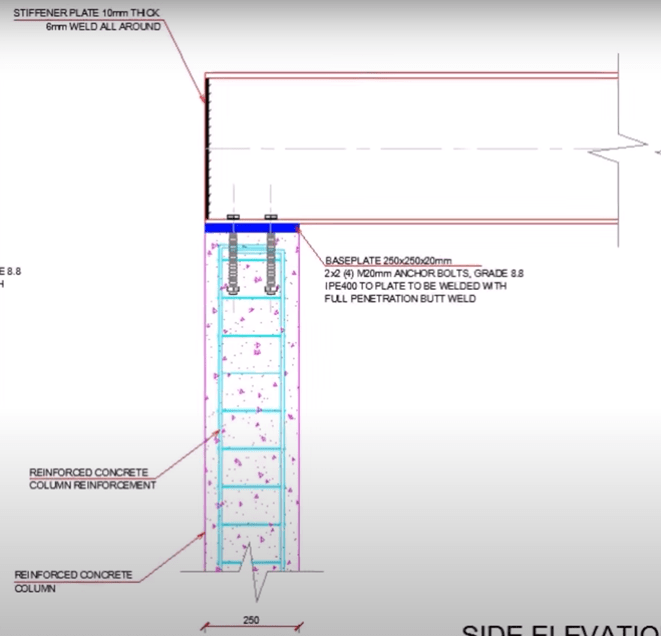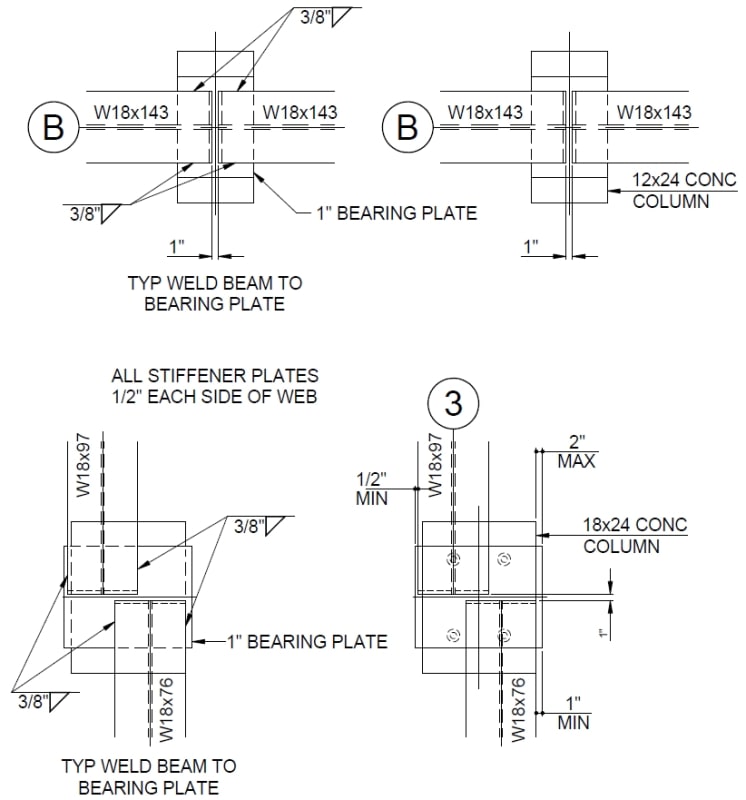My objections to the detail are:
1) The plate is the same size as the concrete column, a very skinny little thing.
2) As others have said, a full penetration weld makes no sense. How would you do it between flange and bearing plate? What is it far? The bolts go through the beam flange.
3) If this is an attempt at a moment connection, it doesn't pass the smell test. That size beam is going to easily overpower the column.
4) What are 4 bolts for? 2 bolts centrally located in the little column would make more sense.
5) Embedment of the bolts, combined with the reinforcement, looks insufficient. Why are the column bars cogged at the top? Much better for the bolts to extend further, with straight column bars. The way it is shown, placement of concrete through the assembly at the top would be unnecessarily challenging.
6) The stiffener location at the extreme end of the beam does little as a stiffener.


